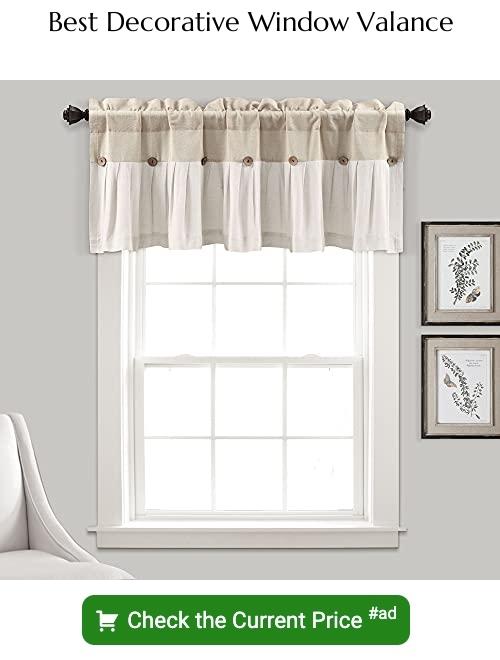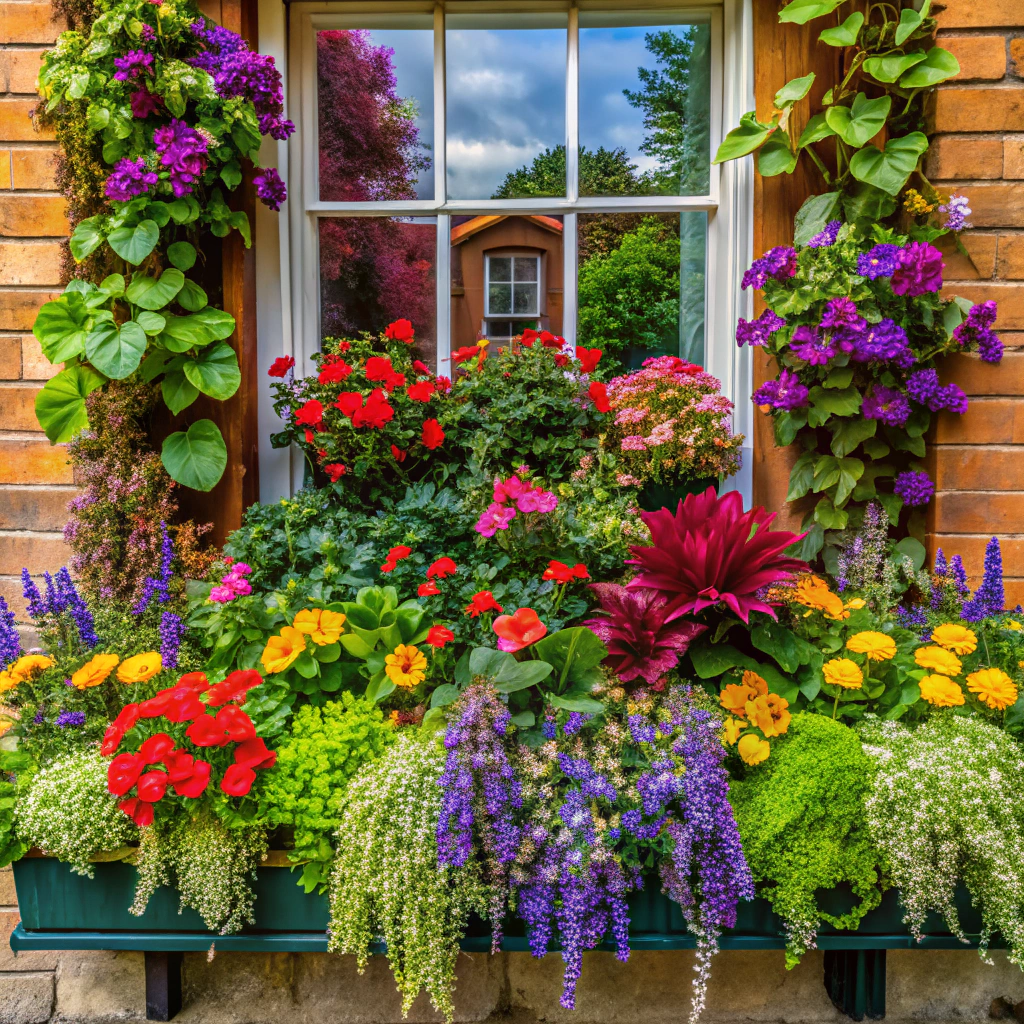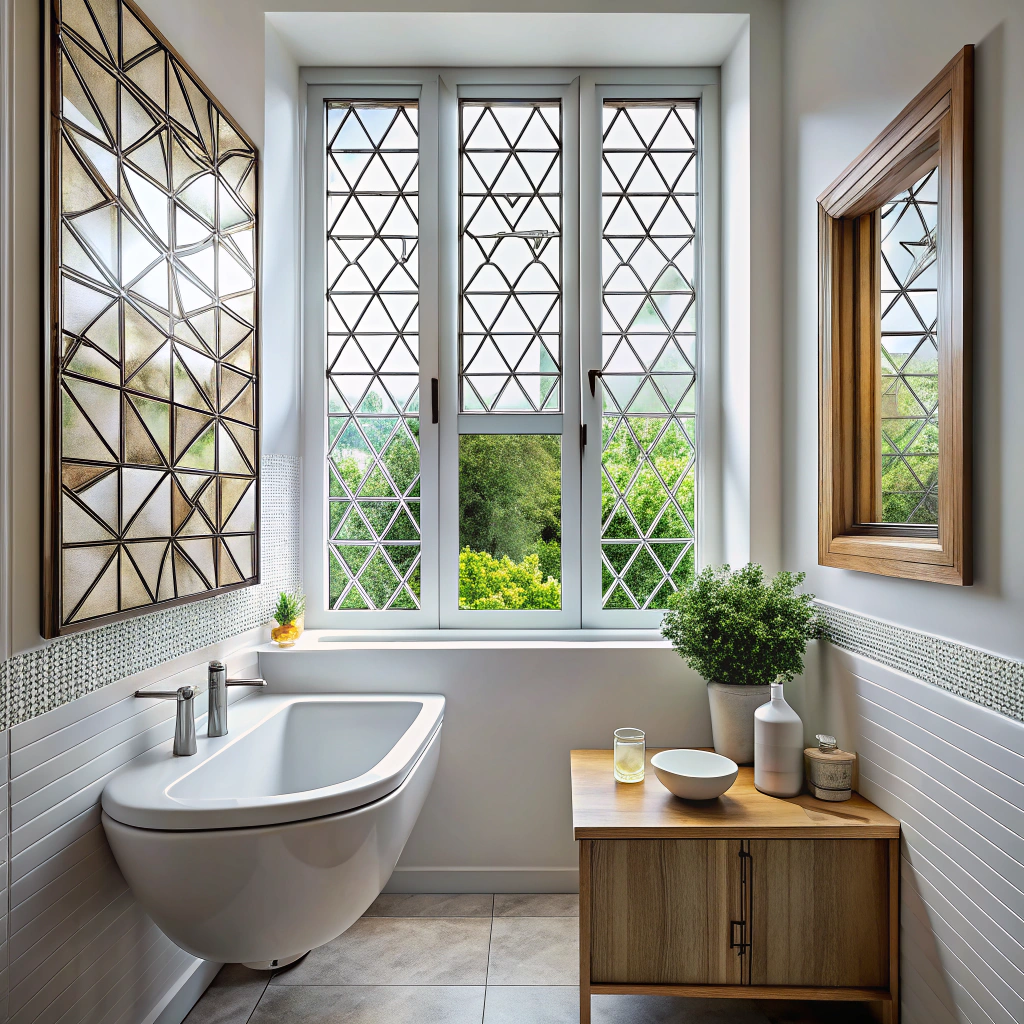A valance is a decorative window treatment that conceals the hardware used to hang curtains or blinds.
A valance, in the context of house windows, is a type of window treatment that covers the uppermost part of the window. Often used in conjunction with other window treatments such as blinds or curtains, it serves both functional and decorative purposes.
It conceals the mounting hardware of other window treatments, providing a polished look, while also adding a touch of elegance and style to your windows.
In this article, we delve into the different types of valances, how to choose the right one for your home, and tips on installing them.
Key takeaways:
- Valances conceal hardware and add elegance to windows.
- Valances have decorative and functional purposes.
- Different types of valances include simple, pleated, balloon, swag, ascot, and Italian.
- Choose the right valance based on room theme, use, window size and shape, color and pattern, and textile type.
- Valance maintenance includes regular dusting, mild cleaning, deep cleaning, ironing or steaming, repairing damage, routine inspection, blotting stains, and sun protection.
Explanation and Purpose of a Valance
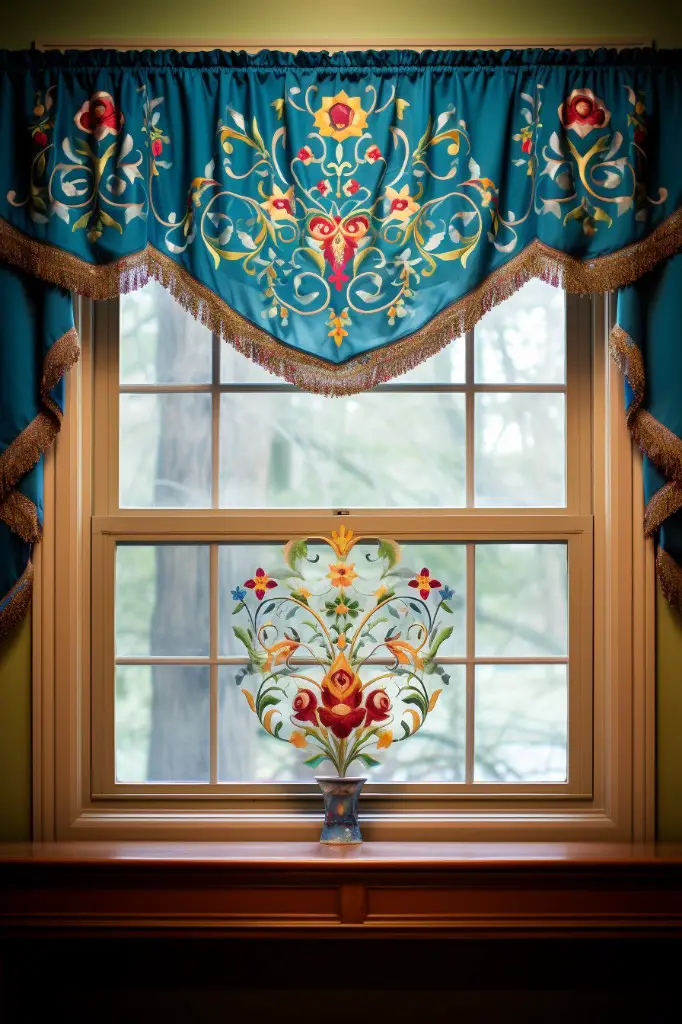
A valance, predominantly a decorative accessory, allows for a personalized embellishment to the outlook of your windows. It is essentially a short curtain or drape that only covers the uppermost part of the window. The charm of a valance lies in its ability to enhance the aesthetic of a room by adding color, pattern, and shape thereby providing an attractive finish to your windows.
- Adding Style: Incorporate texture and pattern to create a focal point on your windows.
- Concealing Hardware: Hide unattractive curtain rods, tracks, or other mounting hardware lending a neat appearance.
- Unifying Decor: Unite different colors, themes or patterns present in a room.
- Softening Lines: Lower the harsh lines of square or rectangular windows, help in breaking up the monotony.
- Enhancing Privacy: Valances partnered with blinds or curtains can increase the level of privacy.
- Balancing Room Proportions: When hung higher, they can create an illusion of taller windows and ceilings.
Valances are not just about beauty, they are an easy and effective way to add an extra layer of personality to your rooms. Therefore, understanding their purpose is a vital first step towards creating a desirable window setup.
Types of Valances: Simple, Pleated, Balloon, Swag, Ascot, Italian
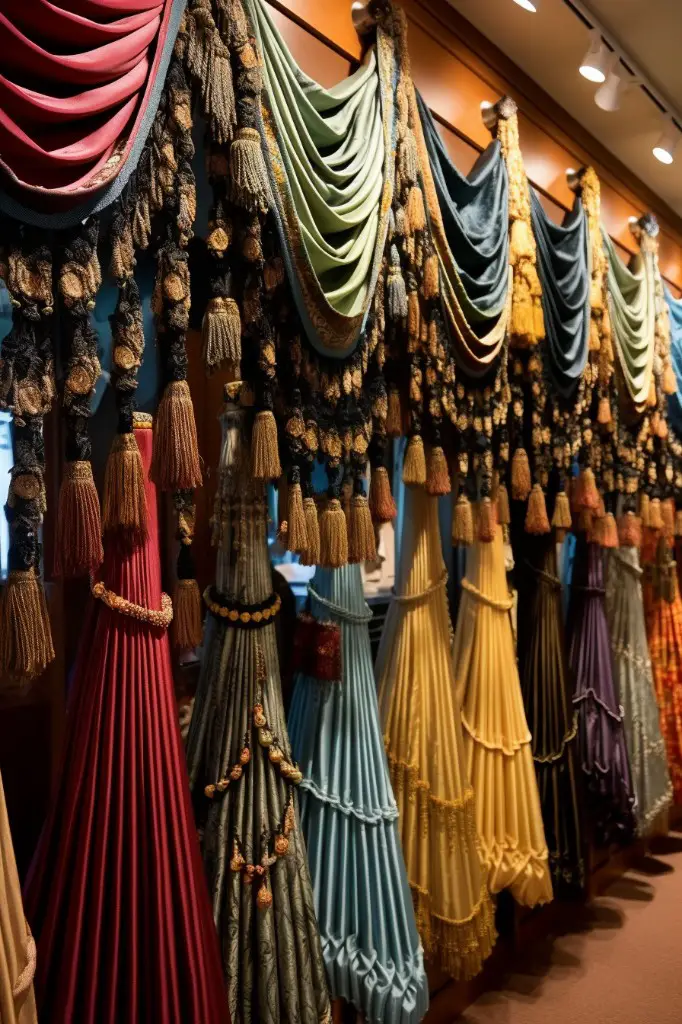
A simple valance, as its name implies, is an uncomplicated, straightforward, single piece of fabric hung from the top of the window.
The pleated valance brings in a formal vibe, with its fabric folded into pleats just like a pleated curtain, providing an organized, neat appearance.
Next is the balloon valance. It puffs out from the window, creating a “balloon,” which works best for bedrooms for a whimsical, dreamy aesthetic.
The swag valance features a draped aesthetic, offering a casual yet refined look perfect for living rooms or dining areas.
An Ascot valance adds some sophistication and elegance to any room using triangular points hanging down.
Finally, the Italian valance stands out with a reverse curve pattern, reminiscent of classic European aesthetics.
Remember, every type tied uniquely to a certain ambiance – matching the valance to the room style vastly enhances the overall interior design.
Choosing the Right Valance for Your Room
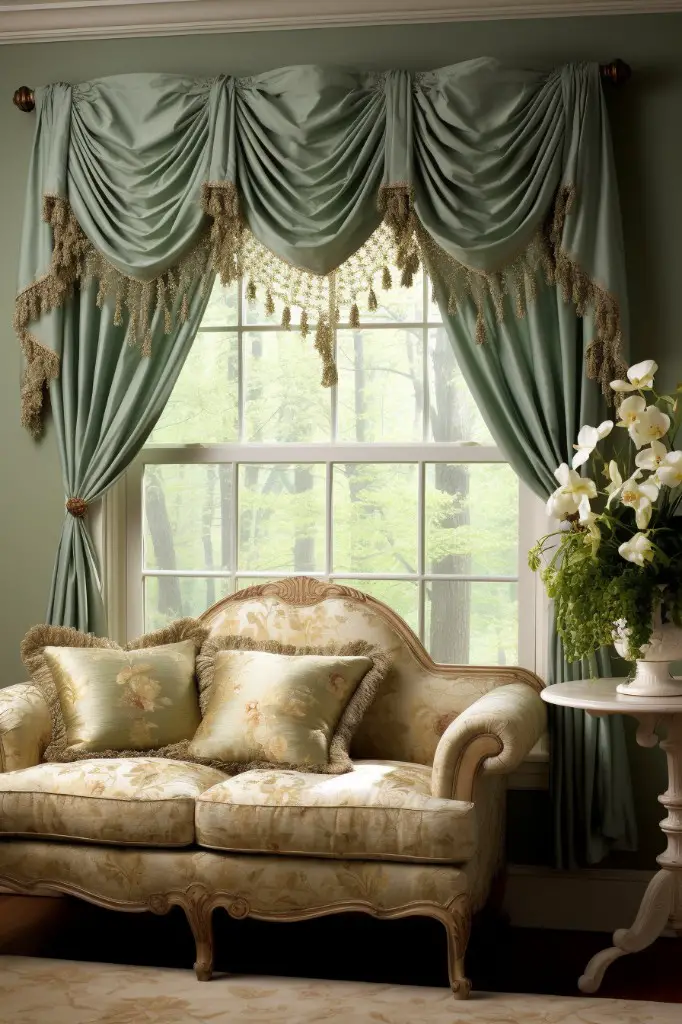
To select an ideal valance, consider these aspects:
Room Theme: Start with the decor style of the room. Traditional styles suit structured valances like swag or balloon types, while modern interiors match well with simple, sleek designs such as box pleat variations.
Use of Room: For rooms where light control is crucial, opt for heavier or layered valances. For areas needing less light control, delicate materials such as lace or sheer fabric are appropriate.
Window Size and Shape: For small windows, a simple valance can enhance the size, while larger windows can handle more extravagant styles. In terms of shape, consider if the window is standard, bay, or arched, as the valance should complement its form.
Color and Pattern: These should harmonize with the existing color scheme of the room. A monochromatic room might benefit from a boldly patterned valance, while a pattern-rich room may need a solid, neutral valance as grounding.
Textile Type: This primarily depends on the look you’re going for. Heavier fabrics project a sense of luxury, whereas lighter materials provide a more casual, airy feel.
Finally, while aesthetics are important, don’t forget about functionality. Consider how easy your chosen valance will be to remove for cleaning, or if it might hinder the window’s operation.
Detailed Look At Box Pleat and Cascade Valances
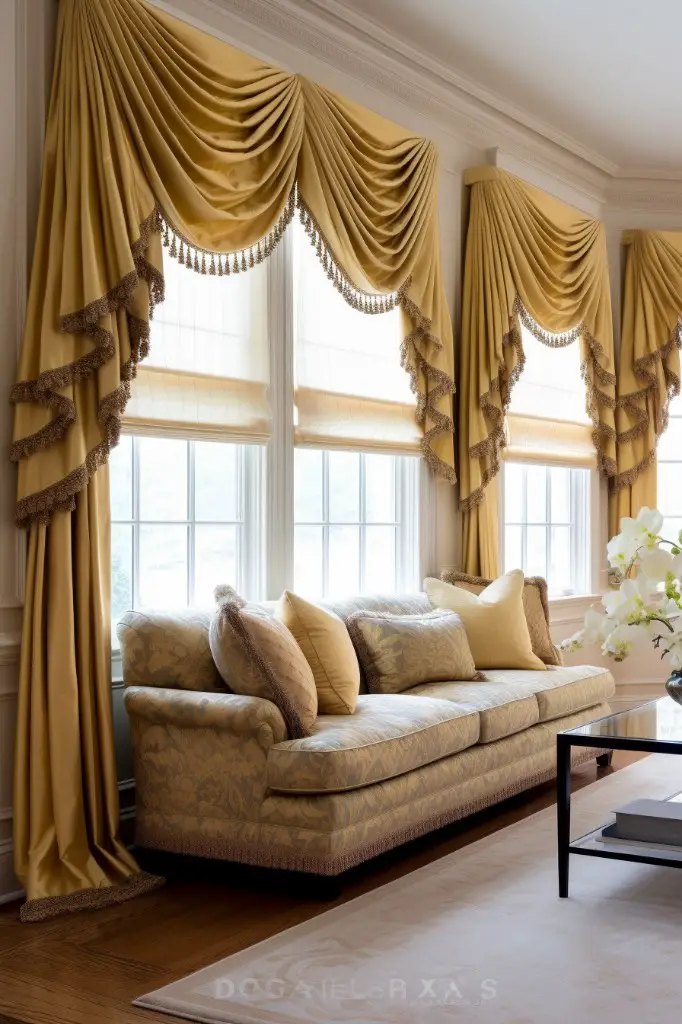
Box pleat valances create a polished and structured appearance. They feature a series of deep folds that resemble boxed pleats. When made from fabric that holds its shape, this valance style exudes a tailored, clean-cut vibe. They are perfect to complement the windows in an office or a formal dining room.
Cascade valances, on the other hand, sway more towards the whimsical. Named after the cascade of fabric they produce, these valances create a flowy, draping effect. If you’re looking for a romantic touch or a more relaxed ambiance, cascade valances are your pick. They drape gracefully, adding a dynamic element to the windows. Especially appealing when paired with sheer or lightweight curtains, cascade valances allow for light diffusion, creating a soft, ethereal glow in any room.
The keys to picking out the most suitable valance style for your room are:
- Identifying the desired mood or atmosphere.
- Matching the valance with the existing décor.
- Considering the amount of light and privacy you need.
In comparison, if rigid lines and a business-like demeanour are what you’re going for, box pleat valances should be your choice. Alternatively, if you lean towards a laid-back, enchanting feel, cascade valances would serve you best. Always remember, the choice of a perfect valance begins and ends with personal preference and functionality.
Differences Between Cornices and Valances
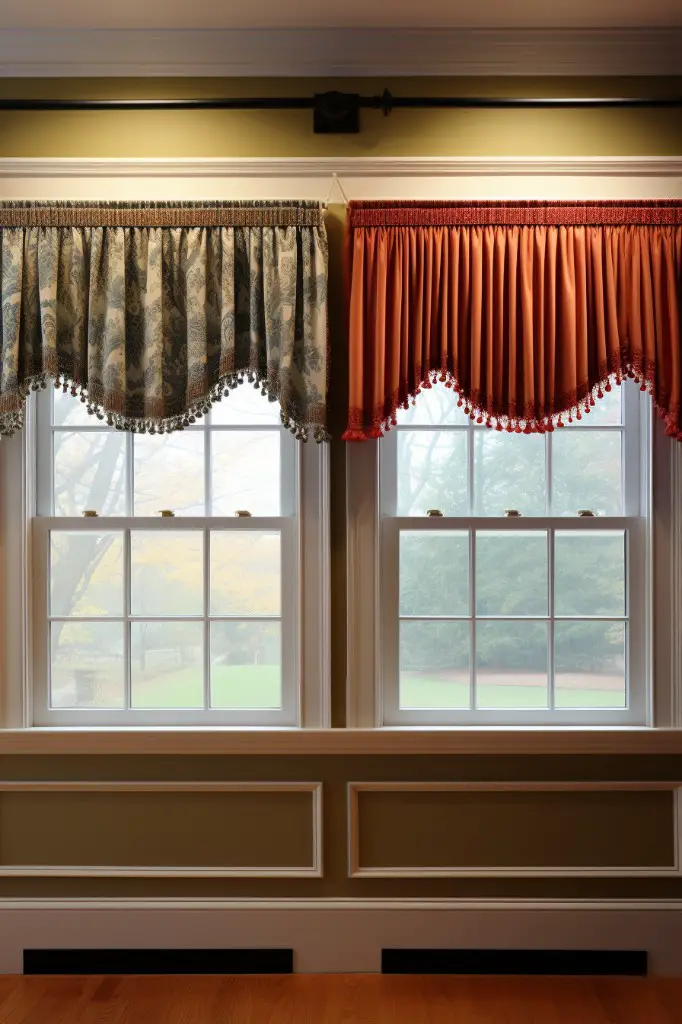
A cornice, by definition, is a hard top treatment typically crafted from wood or faux wood, covered with paint or fabric and mounted above the window. In contrast, a valance is constructed from soft fabric and often hangs loosely from a rod at the top edge of the window.
Cornices shine in several key aspects. First, they provide a structured, formal aesthetic due to their solid material and fixed shape. Second, they can hide unsightly curtain rods or blinds hardware, contributing to a streamlined look. Lastly, their firm structure allows them to be utilized as a standalone window treatment, not requiring curtains or drapes for added effect.
Valances, on the other hand, offer their own unique advantages. They allow for greater creative freedom with a wide array of fabrics, patterns, and styles to select from. They can soften the harsh lines of a window, creating a homier and cozier atmosphere. Also, with their fabric nature, advancing from one style to another is as simple as changing the fabric.
To choose between both, consider the following:
- The desired aesthetic of the room: formal and structured or soft and cozy.
- The need to conceal hardware: select cornices for full coverage.
- Intended permanency and willingness to regularly update the style: choose valances for easy and frequent makeovers.
Remember, it’s all about striking a balance between form and function that harmonizes with your overall room design.
Specialized Valance Types: Jabot, Pelmet, Rosette, Scarf, Swag & Tail
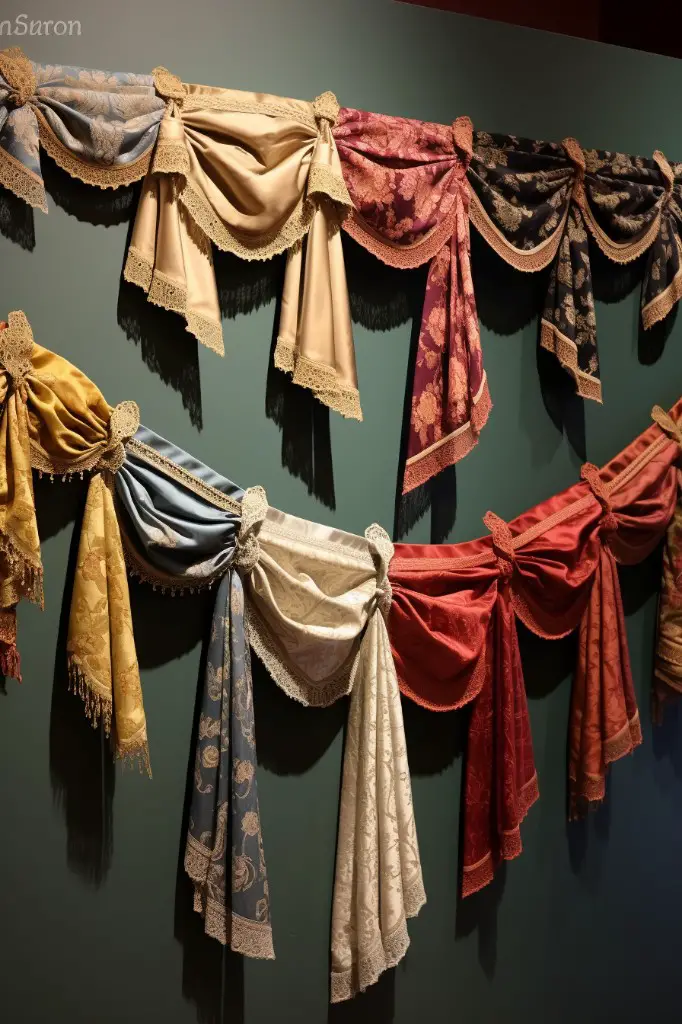
A jabot gives a flourish of fabric on either side of your window, typically paired with a swag to create a regal appearance.
A pelmet serves both aesthetic and functional purposes. Designed of stiffened fabric, it conceals window hardware and can aid in insulating the window by preventing air flow.
The rosette style creates a charming, decorative touch. The valance is gathered or pleated into a rosette or flower shape; excellent for adding a touch of whimsy to any room.
A scarf valance is versatile, with light, flowing fabric draped loosely over a curtain rod or swag holders, creating elegant symmetry on both ends.
The swag and tail style refers to a cascading piece, or swag, often draped over a decorative rod. Long ends, or tails, hang down on either side for a dramatic finish.
Each of these styles can be customized in terms of fabric, color, pattern, and length, giving ways to infuse personality into a space. Maintenance will depend on the fabric used; some may be machine washable, others dry-clean only. Always follow manufacturer care instructions to keep your valance looking its best.
Remember, achieving harmonious decor is about finding the right balance. Mixing these specialized valance styles with other window furnishings can create a uniquely layered window ensemble. Consider practical aspects – light control, privacy, and insulation – along with visual aesthetic when choosing a valance. Take measurements accurately before purchasing or commissioning a valance, ensure the style matches your existing interior, and enjoy transforming your windows into stylish statements.
Valance Maintenance and Care Tips
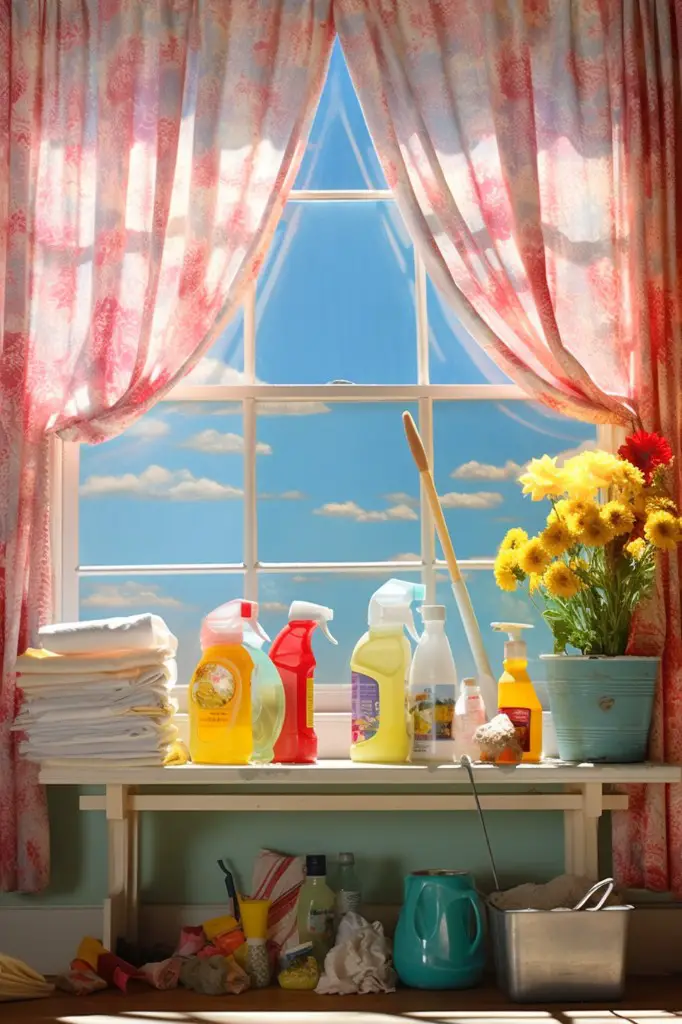
To ensure the longevity and aesthetic appeal of your valances:
- Regular Dusting: Use a feather duster or vacuum with a brush attachment.
- Mild Cleaning: For light soiling, mix a light soap in lukewarm water. Use a sponge or cloth to lightly scrub.
- Deep Cleaning: If your valance is heavy fabric or deeply soiled, consider professional cleaning. Always check the manufacturer’s instructions before cleaning.
- Ironing or Steaming: To remove wrinkles post-cleaning, use a cool iron or garment steamer. Be aware overly hot irons can damage some valance materials.
- Repairing Damage: If you notice minor tears or fraying, repair them immediately to prevent further damage. Consider professional repair for serious damage.
- Routine Inspection: Regularly check the condition of the valance, its hangings, and any cords or pulls for wear and tear.
- Blotting Stains: If stained, blot with a clean cloth to absorb as much of the stain as possible, avoid rubbing. Use a fabric-friendly spot cleaner if needed.
- Sunlight Protection: Consider sun protection if your windows receive a lot of direct sunlight, as prolonged exposure can cause fading or damage.
FAQ
What is a valence in a home?
A valance in a home is a fabric accessory that hangs across the top of a window, primarily to conceal other window treatment hardware while also providing a touch of color, pattern, and softness to the room.
Are valances in style anymore?
Window valances, while not as popular as they once were, still maintain a timeless style that can be fashionable for many years, provided they are carefully selected.
What is the purpose of a valance?
A valance serves as a decorative frame at the top of a window that adds aesthetic appeal, enhances insulation by adding an extra layer against temperature changes, and helps prevent drafts.
How does a valance affect the overall aesthetic of a room?
A valance, as a decorative window treatment, enhances the overall aesthetic of a room by adding elegance and charm, cohesively tying together the room’s theme or color scheme.
Can valances be used with all types of windows?
Yes, valances can be used with all types of windows, offering a decorative touch while potentially aiding in light control and insulation.
What are the different types of materials used in valances?
Valances are often made from materials like fabric, wood, metal, and plastic.
Recap
